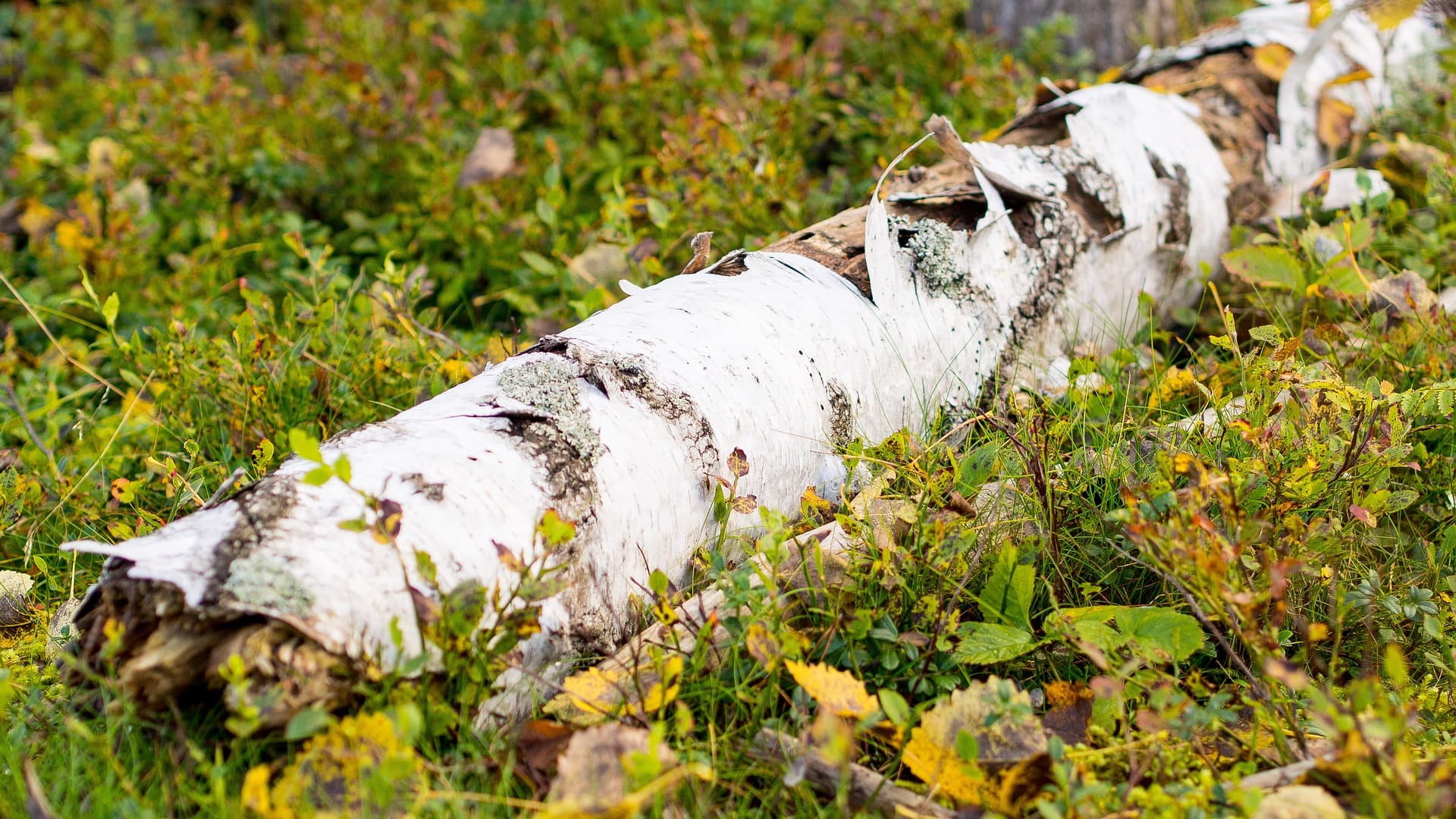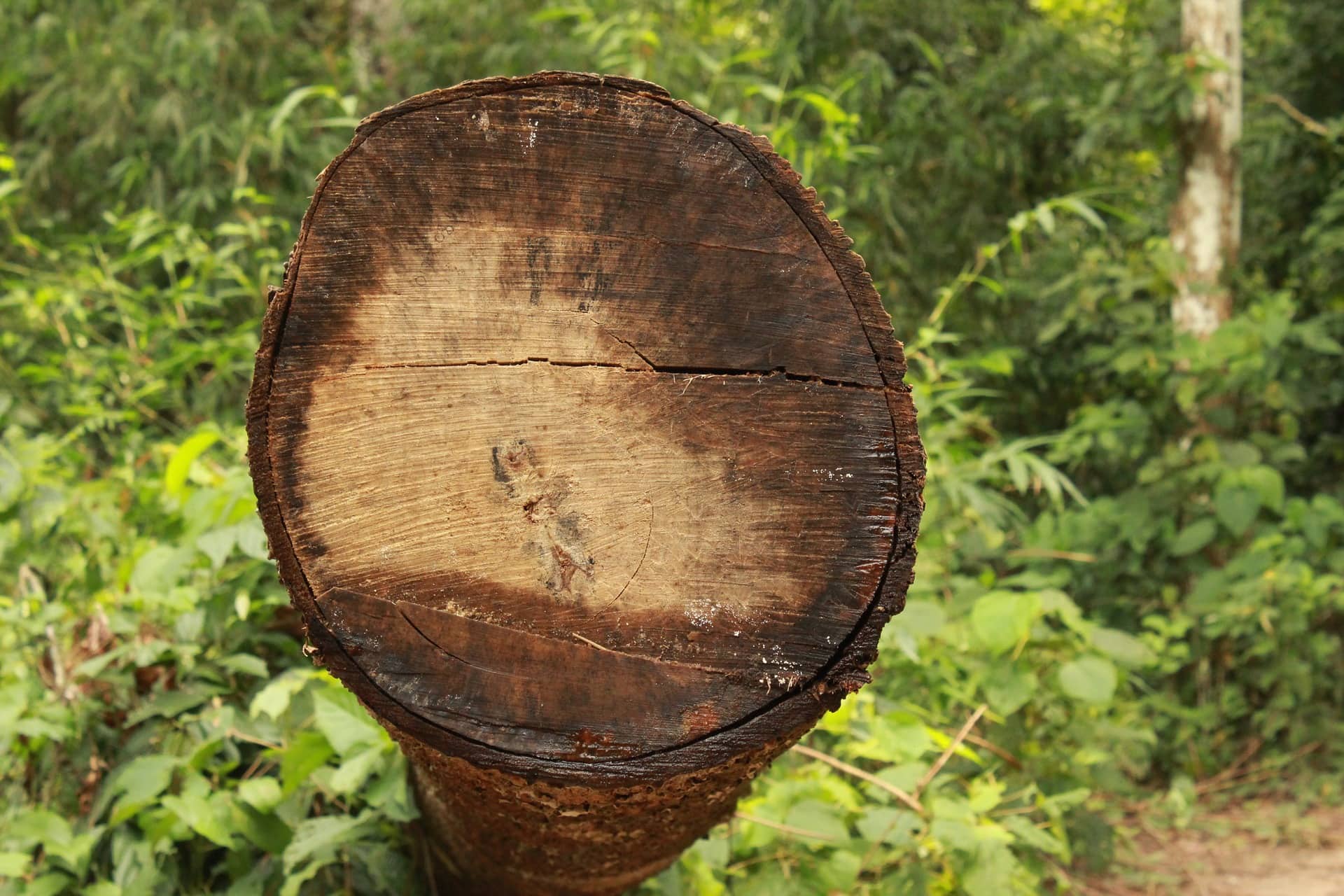What Is Green Lumber? Kiln-Dried vs. Green Lumber Compared
-

- Last updated:

Wood comes in two varieties, green and dried. These two categories separate wood by how much moisture is left inside of them at the time of sale. The most common type of dried wood is kiln-dried lumber—a term you will see bandied around every lumber yard in the country. So, what exactly makes wood green versus dried? How does kiln-dried wood compare to green wood? Is one kind better than the other?
This article will break down green lumber and kiln-dried wood and give a detailed comparison between the two so that there is no doubt which is best for you.
What Is The Definition of Green Lumber?
Green lumber is any wood that has a moisture content of 19% or higher. When live trees are cut down, they are absolutely full of water. Trees, and their wood, hold a ton of moisture inside of them. If wood is not dried, it will still retain all the moisture left over from when the tree was alive. This wood is known as green lumber.
The term green has nothing to do with the color. Green is derived from the meaning of the wood being unseasoned. Wood that has not been allowed to dry naturally or was not put through a drying process retains this unseasoned description.
Green lumber’s bottom threshold for moisture content is 19% but that percentage can be much higher depending on the species of wood and the age of the wood. Some wood can have a moisture content as high as 35% depending on the circumstances. Any wood that is above 19% moisture content is considered green.

What Are the Different Types of Green Lumber?
Any species of wood can be considered green if it has the correct moisture content. However, there are certain types of wood that are found in its unseasoned green state more often than others. Common types of green wood include firewood, raw timbers, and logs. Firewood that is freshly cut is always green (and bad for burning). Raw timbers that are cut for use in construction are green, especially the large ones. Logs that are cut and barked before being refined down to studs or similar building materials are often found green as well.
Lumber is usually not dried until it is cut and sanded down to a more usable size.
Where Is Green Lumber Used?
Green lumber is used in a few distinct areas. For the longest time, wooden ships were made out of green timbers. That is because green lumber is more flexible than dried wood and it allows it to be shaped into curved sections far easier than dry wood. Today, that tradition continues and green wood is used in projects that require wood to be shaped and bent into curves or circles.
Green lumber is also used in natural timber frame construction. Builders who subscribe to this building philosophy like to get unseasoned wood that is not treated, cut, or shaped by modern industrial methods. That causes them to choose green lumber over dried wood when given the option.
Green wood is also used in specialized projects. Some rustic furniture makers like to use green wood hoping that when it dries it will give their furniture a more rugged and aged look. Some woodworkers who like to turn wood on a lath also prefer green wood for its flexible properties. For example, it is easier to turn a bowl out of green wood than it is out of dry wood.

Advantages of Green Lumber
Green lumber is often cheaper than dried lumber. That is because green lumber does not have the time and monetary investment that dried wood requires. Drying wood takes a long time and using a large kiln is expensive. Avoiding this process saves on time and costs in the long run.
Green wood is also very flexible and malleable. Dry wood is very stiff and brittle, which is great for many applications but not all of them.
In some places, obtaining green lumber is also easier and faster than finding dried wood. If you live near large logging communities, it can be simple to source readily available green wood when dried wood is hard to come by.
Disadvantages of Green Lumber
Green lumber does have some serious drawbacks that prevent it from being more widely used. The biggest disadvantage is when wood dries, it shrinks and twists. This unfortunate side effect can make it impossible to use green wood in many applications. If you are building something with precise measurements, angles, and joints, having your wood shrink will cause gaps and can even pull away completely and jeopardize the integrity of the structure. Depending on the size of the beams the shrinkage can equate to inches in the long run which can be disastrous depending on the use.

What Is The Definition of Kiln-Dried Lumber?
Kiln-dried lumber is wood that is dried in a large fire-fueled kiln. The kilns are designed to provide warm, dry heat to the wood that accelerates the drying process. Kiln-dried wood has a moisture content of 8% to 10% which is half that of green wood’s moisture threshold.
What Are the Different Types of Kiln-Dried Lumber?
Any species of lumber can be kiln-dried, but there are species that are more commonly kiln-dried than others. Almost all softwood available to buy for construction is kiln-dried. These species include spruce, white pine, fir, and southern yellow pine. These species are packaged into bunks from the mills and then put into massive kilns to be dried for commercial construction.
Outside of those common species, many other kinds of wood are also kiln-dried for various reasons. A variety of hardwoods such as maple, oak, and hickory are dried for use in furniture and other similar projects. Dried wood is preferred for furniture because it will not move or warp after construction.
Lumber can also be kiln-dried after treatment, dried after treatment means that lumber that has been pressure treated is dried after the fact to remove any excess moisture that might be left over after the treatment process. Wood that is kiln-dried after treatment is often more expensive and harder to find than simple kiln-dried lumber, but it can be useful in certain projects that require pressure-treated wood to be used.

Where Is Kiln-Dried Lumber Used?
Kiln-dried wood is used almost everywhere. Kiln drying is the most common way to remove moisture from wood in the modern era. Virtually every piece of wood that is commercially available has been kiln-dried. This happens for multiple reasons. First, kiln drying is much faster than air-drying wood. Mills can dry huge amounts of lumber in a relatively short amount of time without spending very much money to run the kilns. Secondly, most code requires wood to be graded, and almost all graded wood is kiln-dried. That is because dry wood will not warp, twist or move like green wood. Without moisture, the wood won’t shrink or bend, making it the ideal building material.
Some places also require kiln-dried wood because drying the wood in this way bakes out the organisms that might have been on the wood. For example, wood being imported to the Bahamas must all be stamped KD for kiln-dried.
Advantages of Kiln-Dried Lumber
Kiln-dried lumber will not shrink or move much, which makes it preferable for construction. It is also graded for strength (#1, #2, or #3) which allows it to be used in construction. Kiln-dried wood is also free from pests because the drying process raises the temperature and removes any organisms that might have been hiding in the wood.
Disadvantages of Kiln-Dried Lumber
Kiln-dried lumber is graded based on its moisture content and strength, but it is not graded on its appearance. This can leave kiln-dried wood warped, barky, and cracked. These are simply the result of baking wood at a high temperature. When the moisture leaves the wood, it can alter its appearance. Many people do not like the look of studs and boards that have these features, but they are common results after drying.
Frequently Asked Questions (FAQs)
How Do You Check the Moisture Content of Wood?
The best way to check the moisture content of wood is to use a moisture meter. These nifty machines scan wood and then display a moisture content rating. Moisture meters are necessary equipment for people who are selling dry wood and are widely used at mills that kiln-dry their products. Moisture meters can be purchased for use at home and can be very useful for people who are trying to dry their own lumber.

Can You Dry Green Lumber On Your Own?
Yes, you can dry green lumber on your own. The cheapest and easiest way to dry green wood is to let it air dry. However, air-drying wood can take an exceedingly long time. Wood that is very green can take years to fully dry and reach a similar level of moisture to kiln-dried wood. However, if you have the time, space, and willpower, you can surely leave the wood out to dry on its own. But don’t expect quick results.
A Quick Reference Guide
- When cost is an issue
- If you plan on drying the wood yourself
- When you need flexible wood
- For unique projects such as boats or timber framing
- When you need graded lumber
- When it is preferable for wood not to move
- If you are worried about pests
- When building residential structures or furniture
Common Acronyms
KD – Kiln-Dried
KDAT – Kiln-Dried After Treatment*
*Pressure Treated wood
GRN – Green
 Conclusion
Conclusion
Now you know that green wood has nothing to do with the color of the wood itself but rather how much moisture remains trapped within. Some people do not like to use green wood for anything but despite the push back, green wood has a lot of legitimate uses. Kiln-dried wood remains the most common type of wood found on the market and is the wood used most regularly in construction. Next time you are looking for wood for your next project, you will be able to determine exactly what type of wood is right for you, no matter what is available to buy.
Featured Image Credit: Pixabay
Contents


